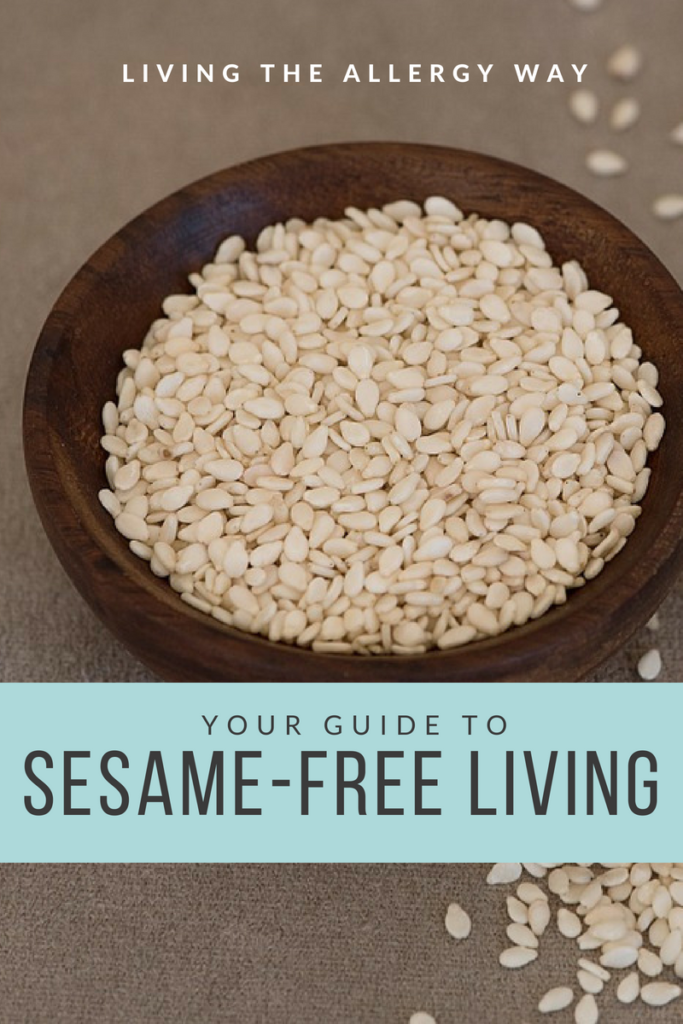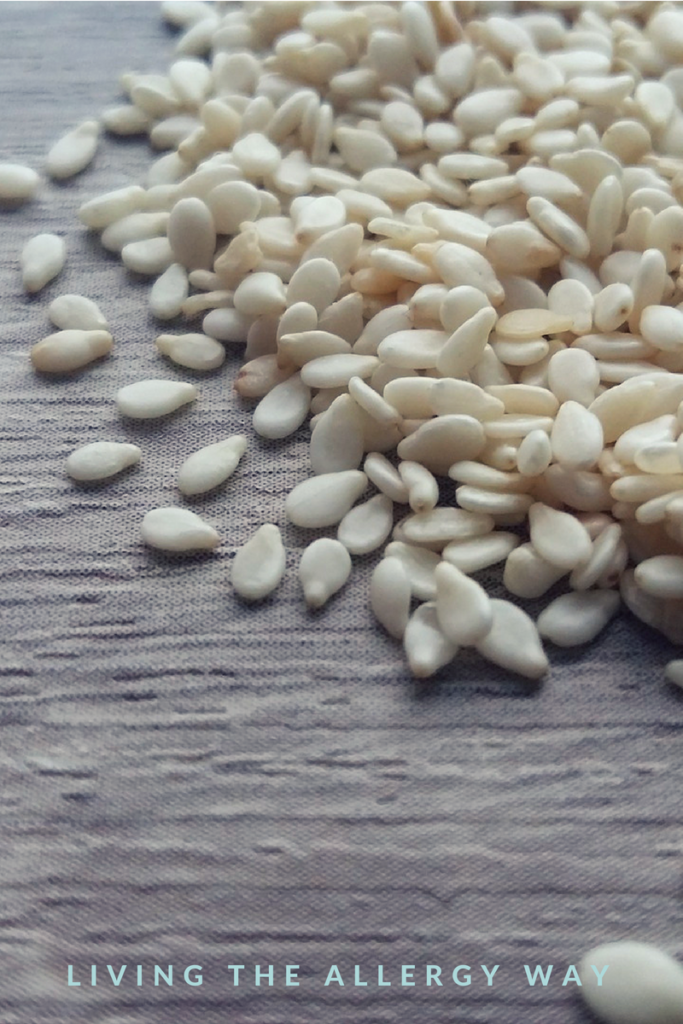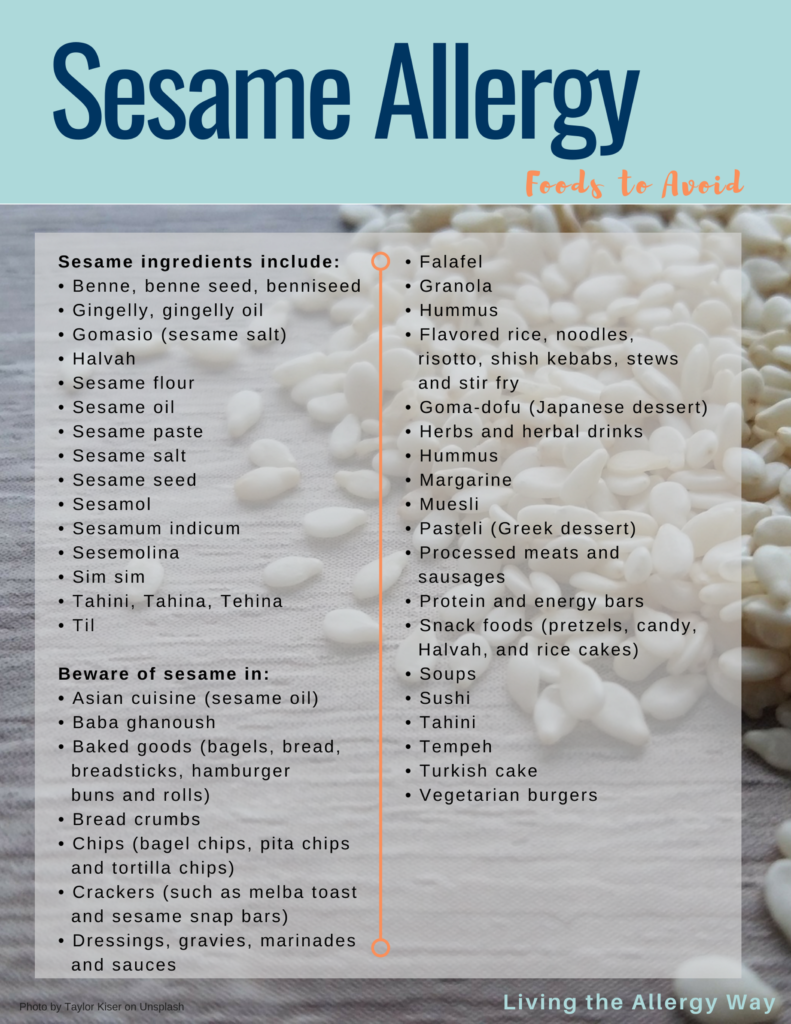If you have been diagnosed with a sesame allergy, you are not alone. Sesame allergies have been on the rise in the last few years. While sesame is not one of the main 8 allergens that many people focus on the recent increase in cases of sesame allergies means that more time needs to be spent learning about this little seed.
Why are sesame allergies increasing, especially in the United States?
No one knows for sure but we do know that the American diet has gotten much more diverse and more people are eating Asian and Middle Eastern foods. America is no longer the land of hotdogs, pizza and apple pie. Today, there are sushi bars, Thai, Middle Eastern and Vietnamese restaurants in most downtown areas.
Who doesn’t love sushi? Okay, so my husband doesn’t but most people love sushi.
Have you been dying to try hummus?
If you have a sesame allergy, you should beware!
So let’s take a look at sesame and how you can avoid this little seed so that you will not have a reaction.
Is Sesame a nut or a seed?
Sesame is a seed and is in the same family as other seeds such as poppy seed, flaxseed, sunflower seed, buckwheat, mustard and pine nut. Sesame seems to the one nut that causes the most allergic reactions. Sesame seeds can come in white, brown and black varieties but the white seed is the most prevalent and the one most people are allergic to.
So what kind of reaction can you expect? Allergic reactions to any allergen can vary so it is important to have yourself tested at your allergist’s office. Some recommend a food challenge while other doctor’s require a blood test, skin testing is not enough. Since sesame can cause an anaphylactic reaction, and Epinephrine, like Epi-pen should be carried at all times.
What should you avoid?
Educate yourself! Your first stop is to learn what ingredients contain sesame and then how to read a label to make sure what items you will need to avoid. I’m sure you have already seen people in the grocery store reading a label, some for calories and some for salt content. Maybe some of these people are also looking to avoid certain foods. That’s usually me!
Sesame can come in many forms including oil, seed, paste and salt. Sesame oil is used in Asian or Middle Eastern cooking to add flavor and is not refined like peanut oil, you should avoid most Asian or Middle Eastern foods. Here is a list of sesame ingredients you should look for on food labels:
- Benne, benne seed, benniseed
- Gingelly, gingelly oil
- Gomasio (sesame salt)
- Halvah
- Sesame flour
- Sesame oil*
- Sesame paste
- Sesame salt
- Sesame seed
- Sesamol
- Sesamum indicum
- Sesemolina
- Sim sim
- Tahini, Tahina, Tehina
- Til
Is Sesame hiding out?
Sesame is also one of those ingredients that can be found in several foods including hummus, tahini and halvah. Nothing is worse than ordering a hamburger and have it come served with sesame on the bun. That’s why it is important to check to see if the buns, breads or bagels you order come with sesame seeds on top. Skip the bun and opt for lettuce! It’s healthier for you and carb free for those of you watching their carbs! Beware, sesame can also be ground up and placed in spice blends which make it difficult to know which ones contain sesame since it is not required to be labelled. If you are severely allergic to sesame, it may be a good idea to contact the manufacturer directly. Hidden sources of sesame include:
- Asian cuisine (sesame oil is commonly used in cooking)
- Baba ghanoush
- Baked goods (such as bagels, bread, breadsticks, hamburger buns and rolls)
- Bread crumbs
- Chips (such as bagel chips, pita chips and tortilla chips)
- Crackers (such as melba toast and sesame snap bars)
- Dressings, gravies, marinades and sauces
- Falafel
- Granola
- Hummus
- Flavored rice, noodles, risotto, shish kebabs, stews and stir fry
- Goma-dofu (Japanese dessert)
- Herbs and herbal drinks
- Hummus
- Margarine
- Muesli
- Pasteli (Greek dessert)
- Processed meats and sausages
- Protein and energy bars
- Snack foods (such as pretzels, candy, Halvah, Japanese snack mix and rice cakes)
- Soups
- Sushi
- Tahini
- Tempeh
- Turkish cake
- Vegetarian burgers
Think that list is long? Be sure to check all skin care products, lotions, ointments, soaps and cosmetics. It will be listed as sesamum indicum.
Another area for concern is that sesame may be in some foods that are labeled as natural flavorings but is not covered by the food labelling line so it is not required to be labelled. Currently, there is a petition for the FDA to add sesame to the list of 8 allergen foods to be labelled in the US but as of today, sesame is still not included.
I’ve included a printable list here of sesame ingredients to avoid. So go ahead and print your list out and carry it with you to the store or when dining out. Remember to read all labels carefully before using any product, even if it has been used safely in the past.
So, go ahead …..
Read those labels!
Know your avoid list!
Always tell your server about your allergies!
Look for hidden sources
Check all lotions, cosmetics, even prescriptions!
Sources: FDA http://www.fda.gov/Food/ResourcesForYou/Consumers/ucm079311.htm
FARE Food Allergy Research and Education.



Leave a Reply